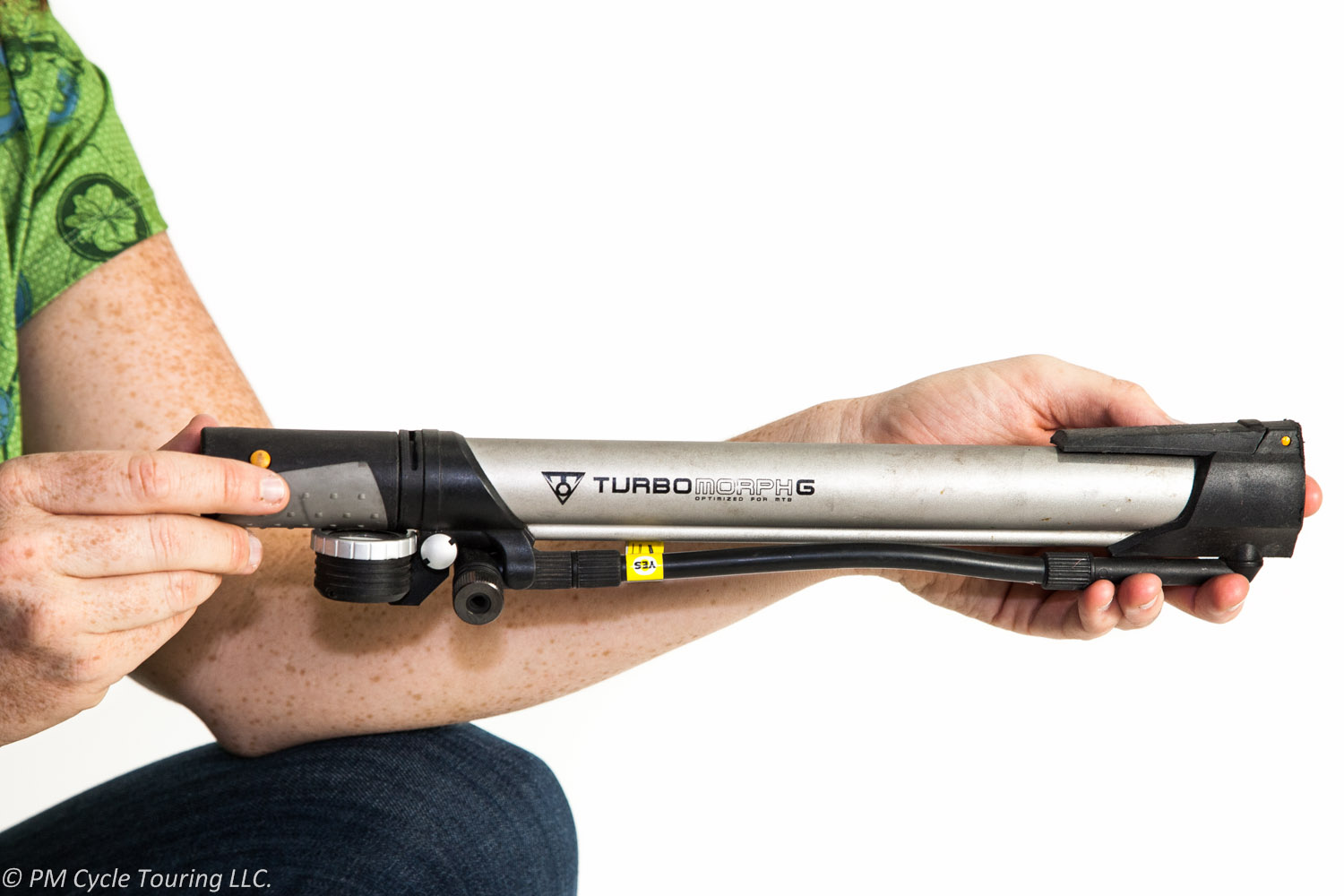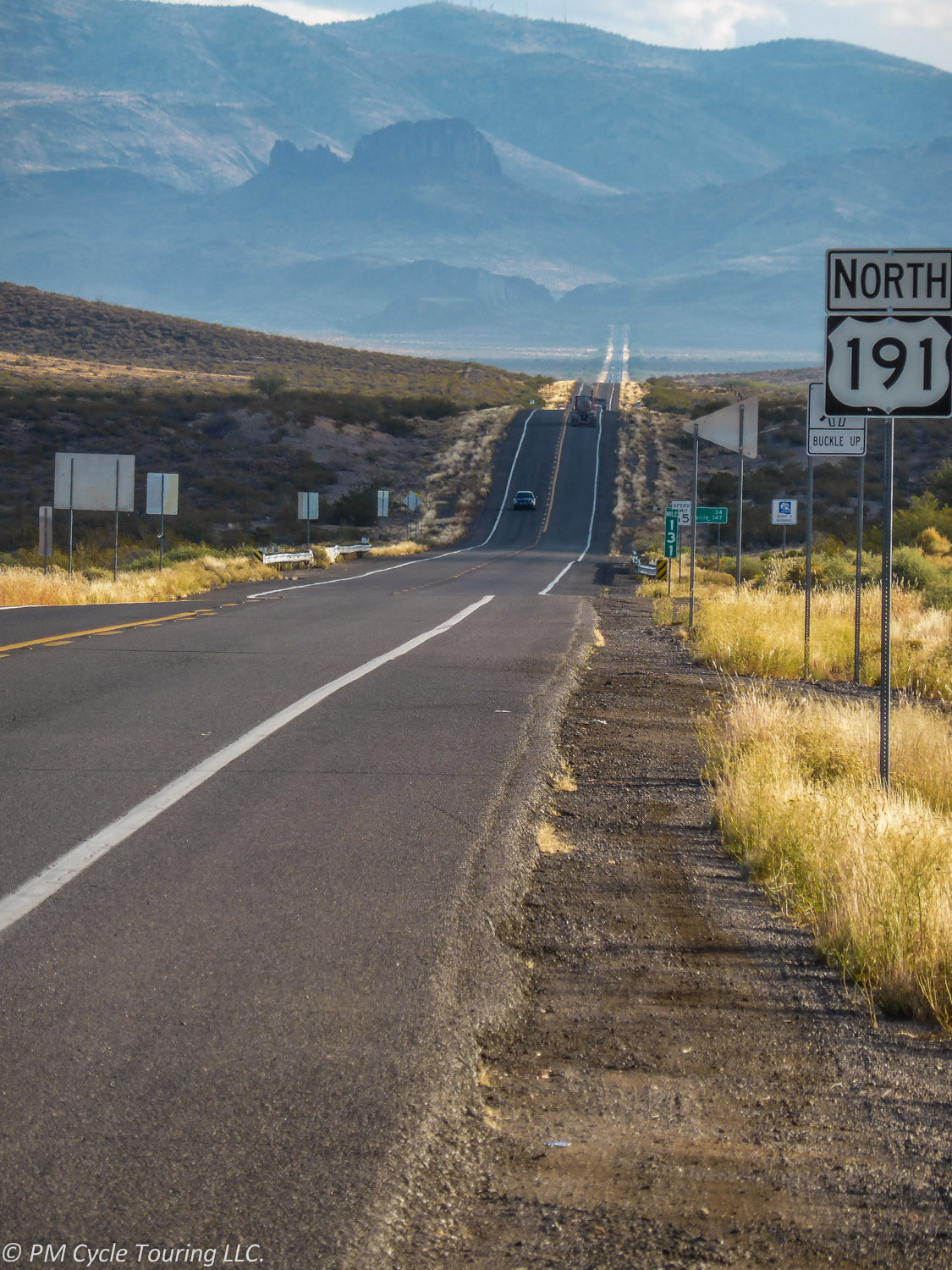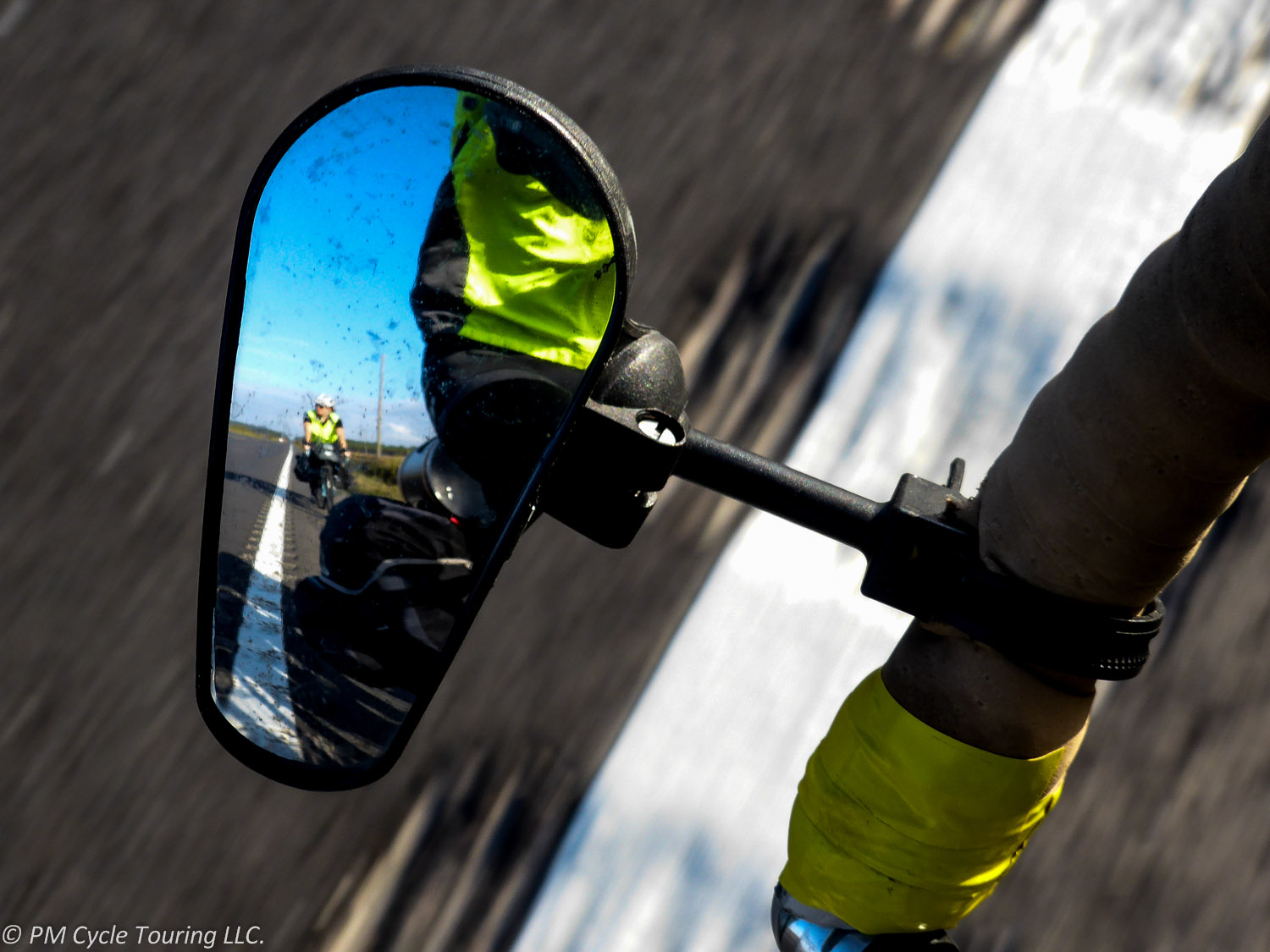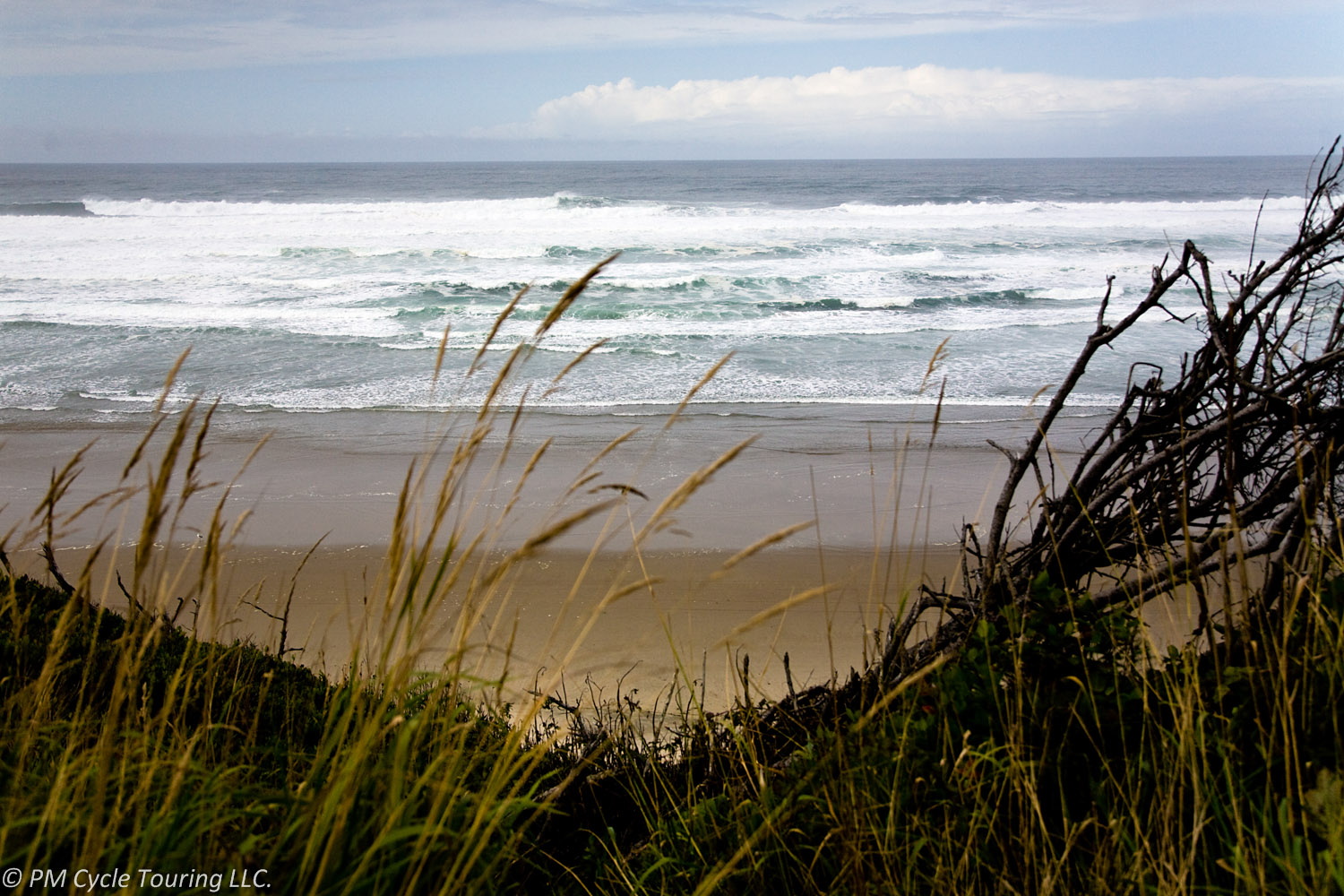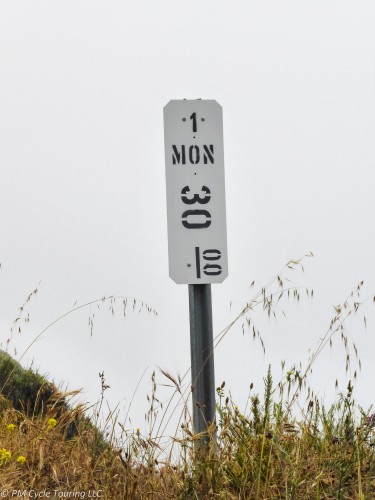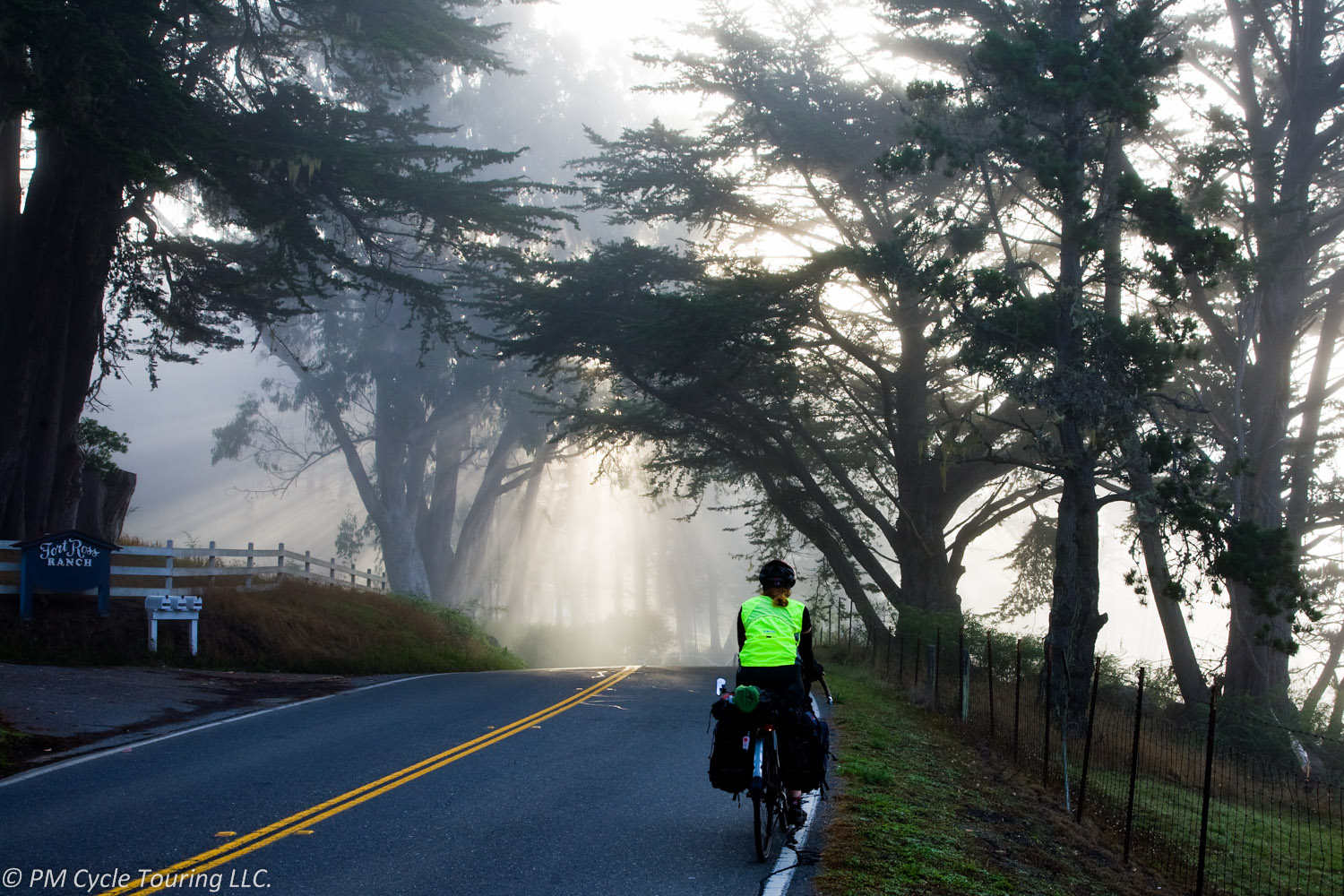When you’re out on a tour (or any ride) you’re bound to get a flat tire at some point. At home, you probably have a floor tire pump to easily get your tires up to pressure. I do. But I can’t carry that pump with me on my rides (I don’t want to). So I use either CO2 or a hand pump. But have you ever tried to pump up your tire using one of those wimpy hand pumps? I like to run my tires at 100 psi, but I have yet to get up to that pressure using a typical hand pump. I’ve tried CO2, but without a gauge, I don’t know what pressure I can get from a cartridge.
Enter the Topeak Turbo Morph Mini Pump. Here’s what makes this pump stand out from the rest:
- Compact
- Lightweight
- Foot Stand
- T-handle
- Gauge
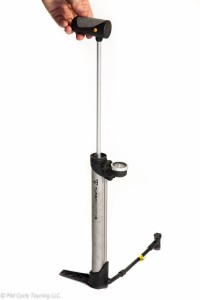
First of all, it is super compact. It easily attaches to any bike frame with the mounting bracket. It’s lightweight, at just 9.9 oz. (280 g). (Ok, so it’s not as lightweight as some other hand pumps, but the extra ounces are worth it, trust me!)
Using the foot stand and t-handle, it’s easy to get the leverage to pump your tire up to pressure. And the gauge lets you know when it gets there. There’s adapters for Presta, Schrader, and Dunlop valves, so no matter your valve type, you’re covered.
We got this pump midway through our latest tour, and we won’t go anywhere without in the future. Highly recommended.
Disclaimer: I have not received any compensation for this review. This review is for informational purposes only, and reflects my own opinion. I have not been in contact with the manufacturer.
